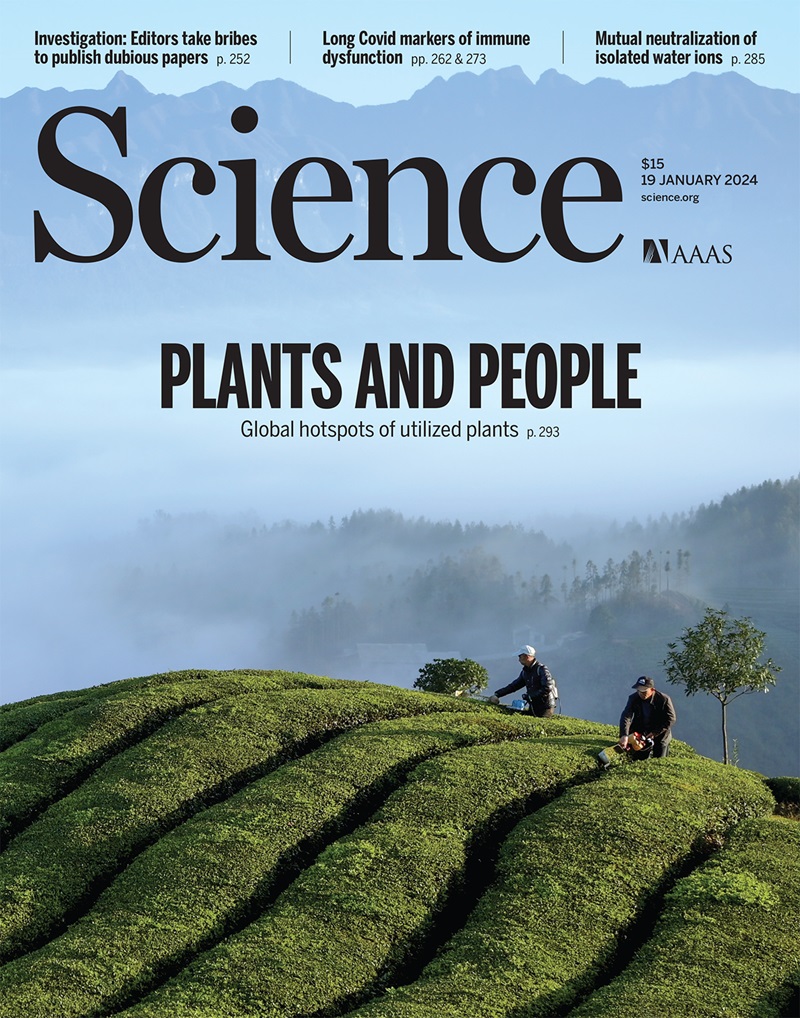MAYEX is an old long noncoding RNA recruited for X chromosome dosage compensation in a reptile
IF 44.7
1区 综合性期刊
Q1 MULTIDISCIPLINARY SCIENCES
引用次数: 0
Abstract
Long noncoding RNAs (lncRNAs) are essential regulatory elements of sex chromosomes that act to equalize gene expression levels between males and females. XIST, RSX, and roX2 regulate X chromosomes in placental mammals, marsupials, and Drosophila, respectively. Because the green anole (Anolis carolinensis) shows complete dosage compensation of its X chromosome, we tested whether a lncRNA was involved. We found an ancient lncRNA, MAYEX, that gained male-specific expression more than 89 million years ago. MAYEX evolved a notable association with the acetylated histone 4 lysine 16 (H4K16ac) epigenetic mark and the ability to loop its locus to the totality of the X chromosome to increase expression levels. MAYEX is the first lncRNA in reptiles linked to a dosage compensation mechanism that balances the expression of sex chromosomes.
MAYEX 是一种古老的长非编码 RNA,用于爬行动物 X 染色体的剂量补偿。
长非编码 RNA(lncRNA)是性染色体的重要调控元件,其作用是均衡雌雄基因的表达水平。XIST、RSX和roX2分别调控胎盘哺乳动物、有袋动物和果蝇的X染色体。由于绿鼹鼠(Anolis carolinensis)的X染色体表现出完全的剂量补偿,我们测试了lncRNA是否参与其中。我们发现了一种古老的lncRNA--MAYEX,它在8900多万年前获得了雄性特异性表达。MAYEX与乙酰化组蛋白4赖氨酸16(H4K16ac)表观遗传标记有着显著的关联,并且能够将其基因座环绕到整个X染色体上,从而提高表达水平。MAYEX是爬行动物中第一个与平衡性染色体表达的剂量补偿机制有关的lncRNA。
本文章由计算机程序翻译,如有差异,请以英文原文为准。
求助全文
约1分钟内获得全文
求助全文
来源期刊

Science
综合性期刊-综合性期刊
CiteScore
61.10
自引率
0.90%
发文量
0
审稿时长
2.1 months
期刊介绍:
Science is a leading outlet for scientific news, commentary, and cutting-edge research. Through its print and online incarnations, Science reaches an estimated worldwide readership of more than one million. Science’s authorship is global too, and its articles consistently rank among the world's most cited research.
Science serves as a forum for discussion of important issues related to the advancement of science by publishing material on which a consensus has been reached as well as including the presentation of minority or conflicting points of view. Accordingly, all articles published in Science—including editorials, news and comment, and book reviews—are signed and reflect the individual views of the authors and not official points of view adopted by AAAS or the institutions with which the authors are affiliated.
Science seeks to publish those papers that are most influential in their fields or across fields and that will significantly advance scientific understanding. Selected papers should present novel and broadly important data, syntheses, or concepts. They should merit recognition by the wider scientific community and general public provided by publication in Science, beyond that provided by specialty journals. Science welcomes submissions from all fields of science and from any source. The editors are committed to the prompt evaluation and publication of submitted papers while upholding high standards that support reproducibility of published research. Science is published weekly; selected papers are published online ahead of print.
 求助内容:
求助内容: 应助结果提醒方式:
应助结果提醒方式:


